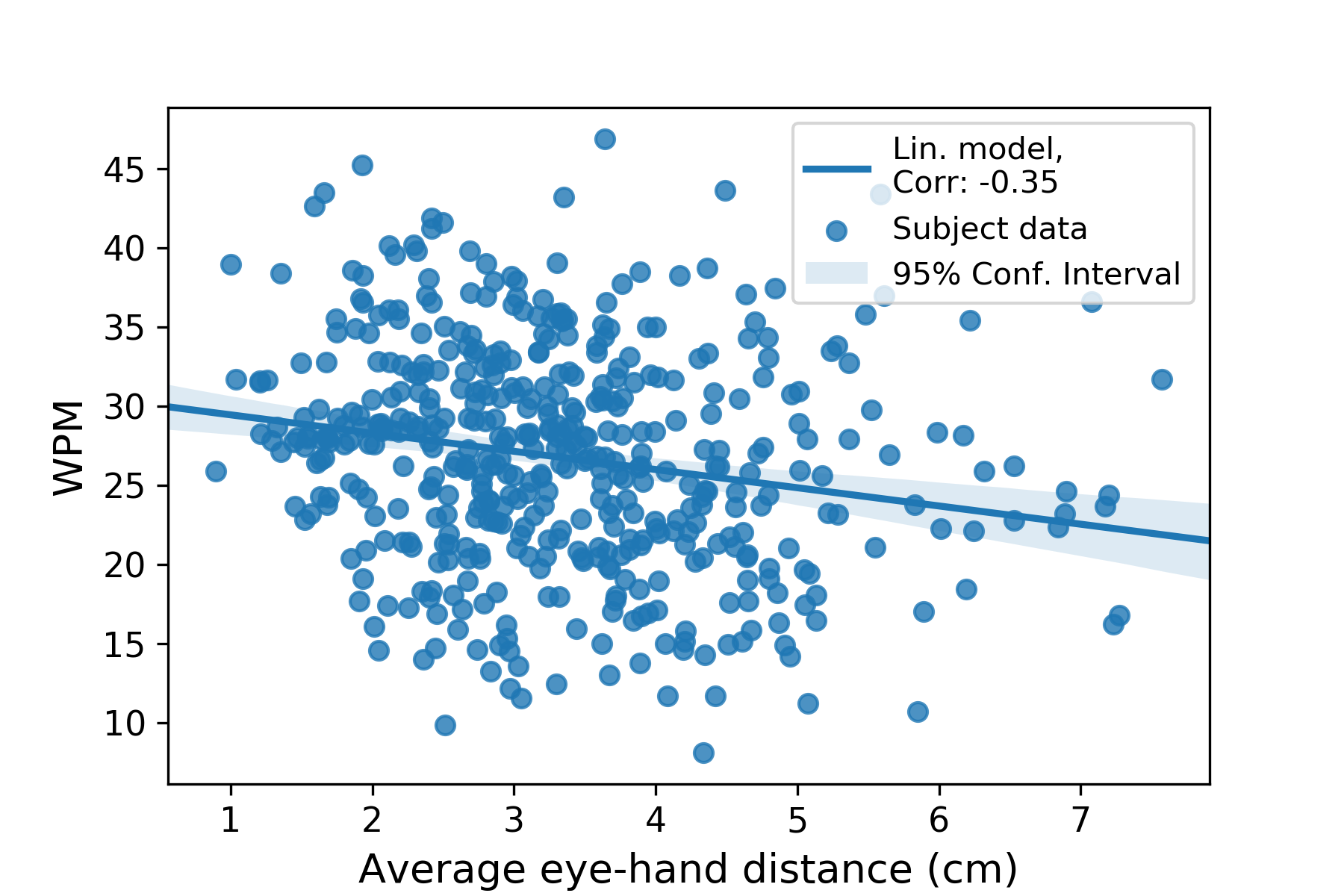Relatively little is known about eye and finger movement in typing with mobile devices. Most prior studies of mobile typing rely on log data, while data on finger and eye movements in typing come from studies with physical keyboards. The paper presents new findings from a transcription task with mobile touchscreen devices. Movement strategies were found to emerge in response to sharing of visual attention: attention is needed for guiding finger movements and detecting typing errors. In contrast to typing on physical keyboards, visual attention is kept mostly on the virtual keyboard, and glances at the text display are detrimental to performance. When typing with two fingers, users, while making more errors, manage to detect and correct them more quickly, which explains part of the known superiority of two-thumb typing over one-finger typing. We release the extensive dataset on everyday typing on smartphones.
All data and videos are open for anyone to use.
PDF, 3.1 MB
How We Type: Eye and Finger Movement Strategies in Mobile Typing.
In Proceedings of the 2020 CHI Conference on Human Factors in Computing Systems (CHI ’20).
@inproceedings{Jiang2020,
author = {Jiang, Xinhui and Li, Yang and Jokinen, Jussi P.P. and Hirvola, Viet Ba and Oulasvirta, Antti and Ren, Xiangshi},
title = {How We Type: Eye and Finger Movement Strategies in Mobile Typing},
year = {2020},
isbn = {9781450367080},
publisher = {Association for Computing Machinery},
address = {New York, NY, USA},
url = {https://doi.org/10.1145/3313831.3376711},
doi = {10.1145/3313831.3376711},
booktitle = {Proceedings of the 2020 CHI Conference on Human Factors in Computing Systems},
pages = {1–14},
numpages = {14},
keywords = {eye-hand coordination, text input, eye movement, mobile device, finger movement},
location = {Honolulu, HI, USA},
series = {CHI ’20}
}
This Errata lists an error and its correction for this paper.
Location: Page 8, Figure 7
Error: Wrong figure and title
Correction:

For questions and further information, please contact:
Xinhui Jiang
Email:
jiangxinhui0077@gmail.com
Email:
jussi.jokinen@aalto.fi
This work has received funding from the joint JST–AoF project "User Interface Design for the Ageing Population" (AoF grant 291556) as an activity of FY2014 Strategic International Collaborative Research Program (SICORP), and from the European Research Council (ERC) under the European Union’s Horizon 2020 research and innovation programme (grant agreement 637991).